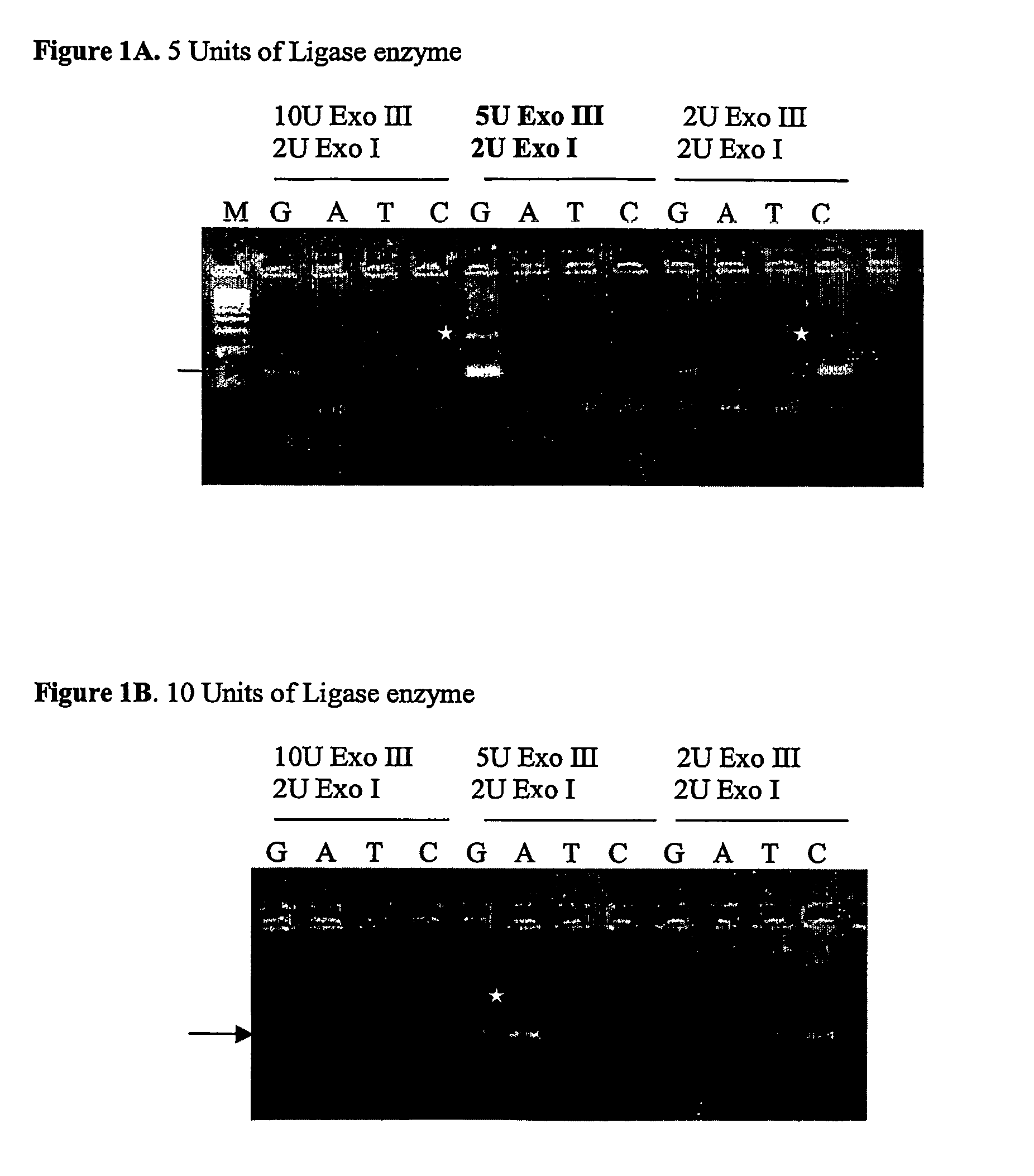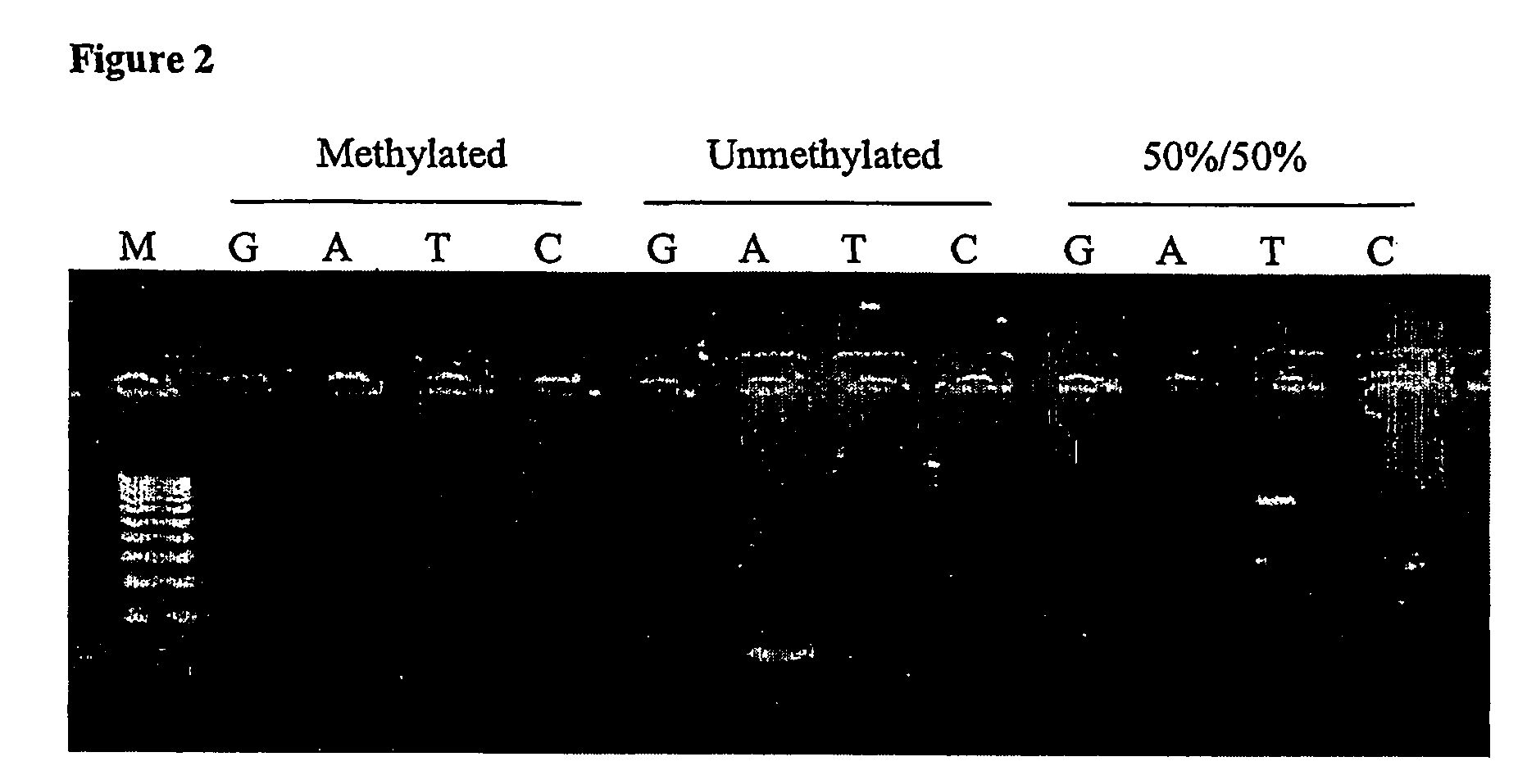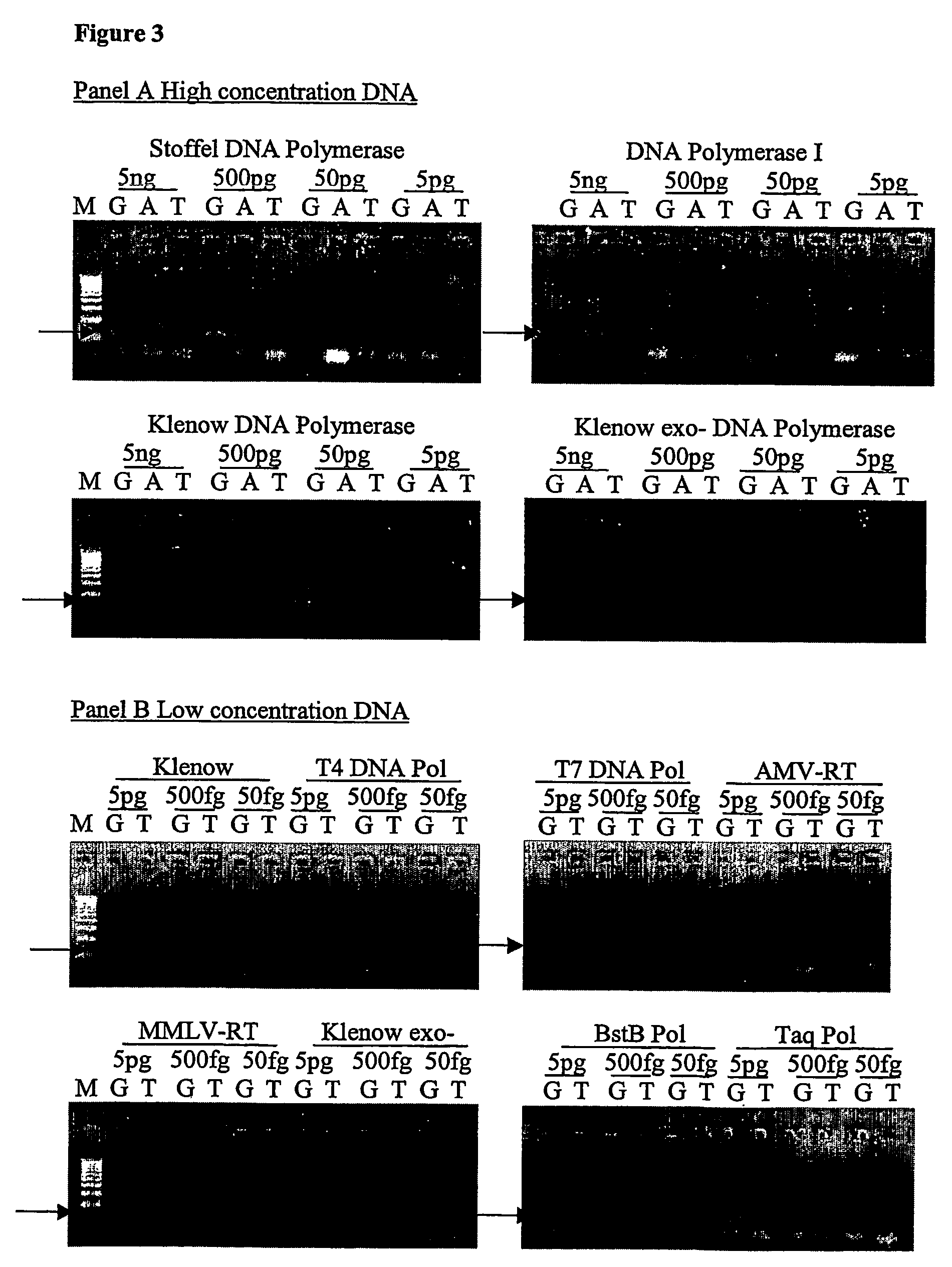Nucleic acid detection assay
a detection assay and nucleic acid technology, applied in the field of nucleic acid detection assays, can solve the problems of large number of probes to be generated for whole genome scanning, large number of preamplified probes, and inability to achieve the synthesis of very long oligonucleotides >110 bp, which cannot be achieved with most commercial distributors
- Summary
- Abstract
- Description
- Claims
- Application Information
AI Technical Summary
Benefits of technology
Problems solved by technology
Method used
Image
Examples
first aspect examples
[0202]FIG. 8 show the method according to the first aspect of the present invention. In Example #1 and #2, the two adjacent clamp sequences were then ligated together using a DNA ligase.
second aspect examples
[0203]FIG. 9 shows the method according to the second aspect of the present invention. In Example #3, a polymerase enzyme will bring the correct base (G) to the site and then a ligase enzyme will ligate the base into the DNA sequence to form a linear probe. In Example #4, a polymerase enzyme will bring the correct base (A) to the site and then a ligase enzyme will ligate the base into the DNA sequence to form a linear probe.
third aspect examples
[0204]In Example #5, four independent hybridisation events need to occur to bring the three clamp sequences positioned correctly on the bisulphite treated genomic DNA (FIG. 10). One arm of the clamps now form a semi-circular probe, while the other two clamps hybridise to the top and bottom strands of the DNA adjacent to the semi-circular probe. A ligase enzyme will ligate the base into the DNA sequence to form a fully linearised probe.
[0205]In Example #6, four independent hybridisation events need to occur to bring the three clamp sequences positioned correctly on the bisulphite treated genomic DNA (FIG. 10). One arm of the clamps now form a semi-circular probe, while the other two clamps hybridise to the top and bottom strands of the DNA adjacent to the semi-circular probe. A ligase enzyme will ligate the base into the DNA sequence to form a fully linearised probe.
PUM
| Property | Measurement | Unit |
|---|---|---|
| volume | aaaaa | aaaaa |
| volume | aaaaa | aaaaa |
| volume | aaaaa | aaaaa |
Abstract
Description
Claims
Application Information
 Login to View More
Login to View More - R&D
- Intellectual Property
- Life Sciences
- Materials
- Tech Scout
- Unparalleled Data Quality
- Higher Quality Content
- 60% Fewer Hallucinations
Browse by: Latest US Patents, China's latest patents, Technical Efficacy Thesaurus, Application Domain, Technology Topic, Popular Technical Reports.
© 2025 PatSnap. All rights reserved.Legal|Privacy policy|Modern Slavery Act Transparency Statement|Sitemap|About US| Contact US: help@patsnap.com



